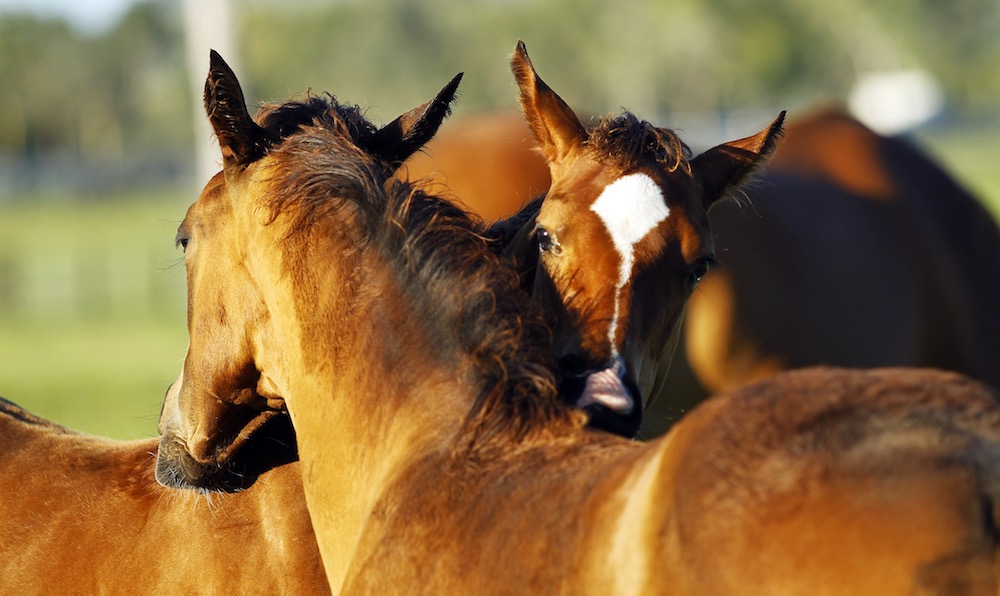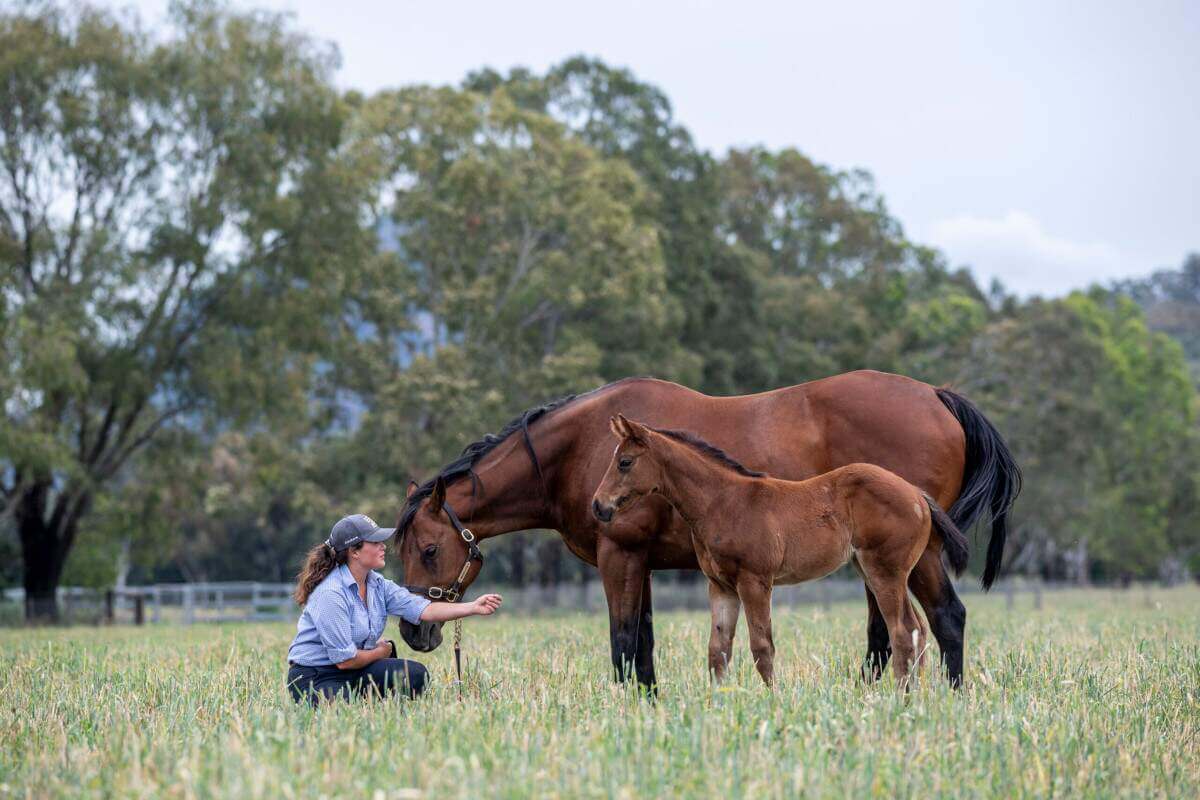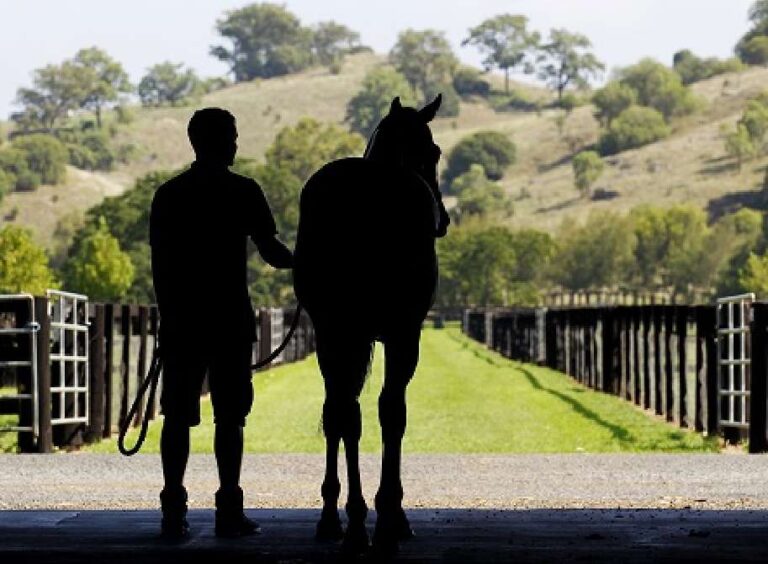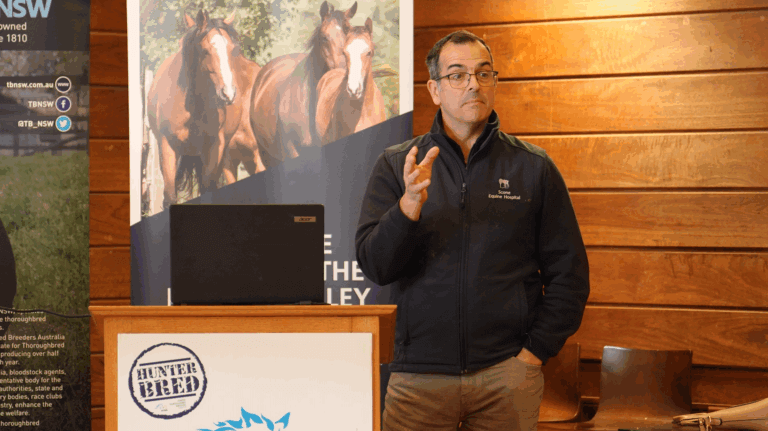Groundbreaking research shows early life foal gut health strongly predicts future athletic performance and impacts susceptibility to disease in later life.
Source: HorsePower
Researchers in the UK led by Professor Chris Proudman of Surrey University School of Veterinary Medicine & Bioscience undertook a three-year study of 52 Thoroughbred foals collecting 9 faecal samples from each foal from 2 days up to 1 year of age to monitor changes in the gut microbiome. These results were then correlated with each horse’s record of gastrointestinal, respiratory, orthopaedic and soft tissue health as well as race performance measured by finishing position, official rating and prize money.
This was a monumental undertaking generating truly massive amounts of data for analysis. The findings were quite remarkable and of significant importance to the Thoroughbred breeding industry.

In particular the study showed that the level of diversity of the microbial populations in the gut during the first 28 days of life had long term impacts, not only on health but on race performance over the three year duration of the study. The more diverse the gut microbiome at 28 days age, the better the athletic performance on the racetrack later.
The foals in the study were typically weaned at around 5 months age and remained on the stud farm of birth until they were yearlings. Foals born by Caesarian or assisted delivery as well as any whose dams had received antibiotics in the three months prior to birth were eliminated from the study to avoid complicating factors. Gene sequencing was used to identify different gut bacteria species from faecal samples. Health reports were collected weekly for each subject for an average 127 weeks and included any veterinary investigation or treatment for orthopaedic, respiratory, soft tissue or gastrointestinal issues. Racing performance was monitored using the racingpost.com database.
Key Findings:
Bacterial diversity was low at two days age with two families predominating, the Enterobacteria and Bacteroides Other groups like the Fibrobacteria and Spirochaetes were absent at two days but increased as the foals aged with other species becoming more abundant later on as the diet and environmental exposure evolved.
Higher diversity of the faecal microbe populations at 28 days was significantly associated with a reduced risk of respiratory disease in later life. The same was true for several measures of diversity at 90 and 365 days age. Put simply, the more diverse the population of the foals gut bacteria, the lower the likelihood of subsequent respiratory disease like pneumonia.
For health events including orthopaedic disease, respiratory and soft tissue problems, a low diversity in early life, 28 to 272 days old, was significantly associated with a higher incidence of disease.
There were also significant positive correlations between gut microbiome diversity at 28 and 90 days age and race performance as measured by all three parameters examined. The confidence level for this link was 95% when factors such as birthweight, gestational age and age of the dam were accounted for.
Impact of Antimicrobials (Antibiotics). Early use of antimicrobials markedly reduced gut microbiome diversity in foals at 28 days age with subsequent negative impact on racing careers and earnings. Average prize money earned was significantly lower at 3 years age in those horses which had received antibiotic treatment in the first month of life.
Exposure to antimicrobials in the first 28 days significantly increased the risk of respiratory disease in later life but the impact on orthopaedic disease and soft tissue problems was not significant.
Abundance of some specific families of bacteria at the early time points were associated with subsequent specific disease risk. For example, relative abundance of Streptococci at 8 days old was linked with subsequent soft tissue injury or disease (infected wounds, abscesses, cellulitis) and Pseudomonas at 8 days with respiratory disease later on. Other bacterial families at 28 days old were associated with stronger race performance, placings and earnings.
The authors note that this was an observational study – it did not set out to establish a cause and effect relationship. However, they also note that the strength of the relationships seen between diversity in the gut bacterial populations early in life and subsequent risk of health events and race performance actually does indicate a causal relationship as a plausible explanation.
In other words, diversity, even at 28 days, is causing the impacts on health, disease risk and race performance up to three years later. Degree of diversity at one month age actually predicts subsequent athletic performance.
As to the mechanisms involved here, studies in humans and animals have shown that gut microbiome diversity between birth and weaning imprints the body’s immune system. There seems to be a critical window for this to occur, in humans perhaps six months but possibly in horses the window closes much earlier, around one – two months of age. This priming of the immune system is one possible explanation for the findings above with more diversity in the early gut microbiome programming and setting up a stronger immune system for life.
Antibiotics. This study was not designed to examine the role of antibiotics but nevertheless demonstrates a detrimental effect of antibiotic exposure in the first month of life on health outcomes and performance later on. Since diversity in the gut microbiome has a positive influence on future outcomes it makes sense that antibiotics work against this beneficial effect. Use of antibiotics, especially broad spectrum antibiotics, has been described as equivalent to carpet bombing the gut microbiome.
Clearly this research should sound the death nell on the indiscriminate use of prophylactic antibiotics in young foals once and for all. Antibiotic resistance is a worldwide health problem in humans and animals, accounting for tens of thousands of human deaths annually. Their use in young horses is still indicated where the downside risk justifies it, for cases such as pneumonia or joint infections for example. However, their use should be targeted and only under strict veterinary supervision informed by the research outlined above.
Practical implications. In the short term the avoidance of antibiotics in young foals is the most obvious one. In future there may be potential for interventions designed to boost diversity in the gut microbe population by introducing live bacteria or substrates to the foals diet similar to the current use of probiotics and prebiotics. However, as yet we have no ability to manipulate the composition or diversity of the gut microbiome backed by any scientific credibility.
There’s a long road ahead on that front but this research is a very important early step and hopefully will pave the way for more advances in the new science of sportomics as it relates to horses.
Perhaps one day buyers at yearling sales will be asking vendors whether or not a yearling received antibiotics as a foal? Given the above, it could be a fair question!
Note. The above information is taken from the journal paper cited below. For clarity certain words and phrases have been copied directly from the source material which can be viewed online here:
Leng, J., Moller-Levet, C., Mansergh, R.I. et al. Early-life gut bacterial community structure predicts disease risk and athletic performance in horses bred for racing. Sci Rep 14, 17124 (2024). https://doi.org/10.1038/s41598-024-64657-6
David T. Wood BVSc. MRCVS. For Horsepower Feeds & Supplements (18/09/2024)





